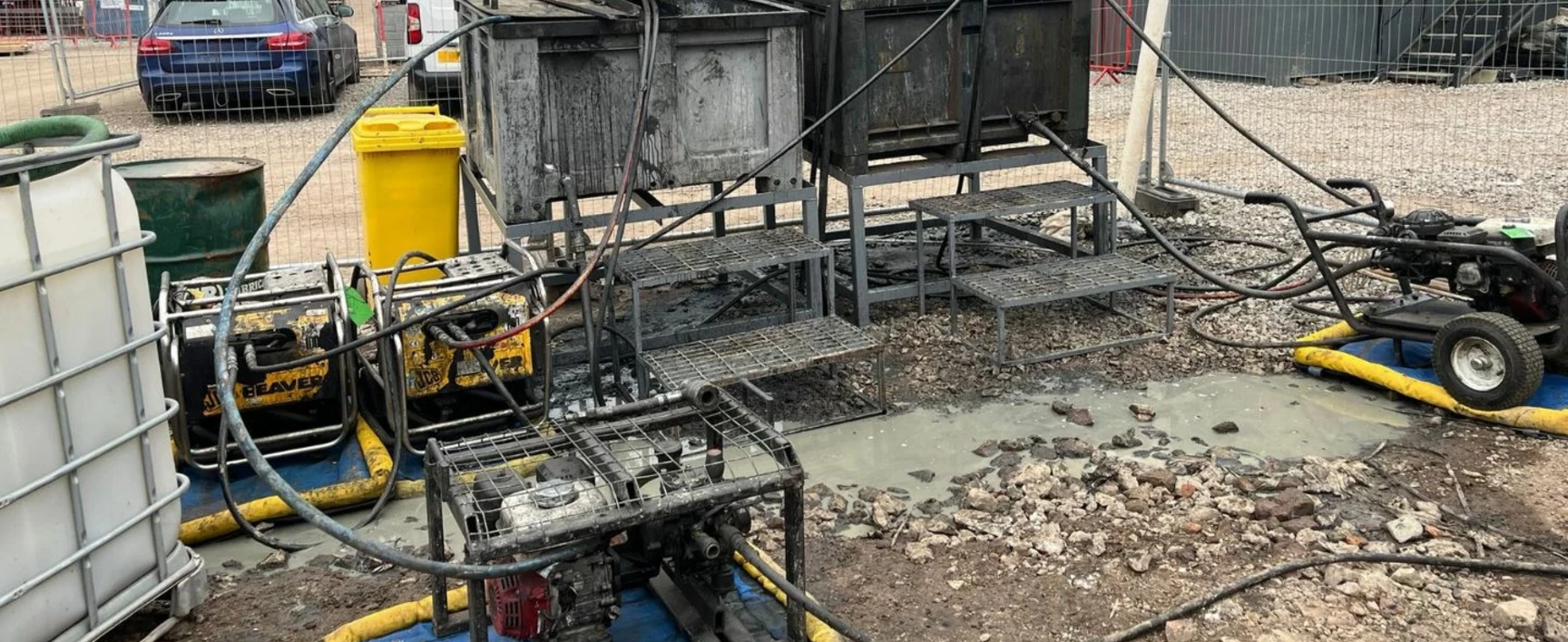Bioremediation is an environmentally friendly, cost-effective method for cleaning up ground contamination. We recognise that every site is unique, making selection of the appropriate field application method essential for successful remediation.
Our team will answer common questions about bioremediation application methods, offering valuable insights into the processes, specialised equipment, and factors that influence bioremediation delivery. We will provide you with essential information on how SOCOTEC can support you in advancing the project lifecycle of contaminated sites.

Talk to our experts
Learn more
What is bioremediation?
Bioremediation is a method of remediating contaminated soil and groundwater that utilises microorganisms, plants or fungi to breakdown pollutants and clean up sites. It is an environmentally friendly, cost -effective and targeted approach for addressing ground contamination, effectively tackling a variety of pollutants including oil spills and heavy metals.
What factors determine the field application strategy?
The optimal approach for one site may differ significantly from what is needed for another, and sometimes a combination of methods is most effective. Key factors influencing the suitability of an application method include:
- Geological ground conditions
- Hydrogeology, including water table levels and permeability
- Depth, type, and spread of contamination
- Suitability of the bioremediation product required
- Site location and other environmental factors
What are the different application approaches?
There are various application methods, each with its own advantages. The three key methods of bioremediation application methods that we can deliver are:
- Direct push injection
- Borehole packer injection
- Spray application
Is specialist equipment needed?
To optimise the application process, we utilise a diverse array of specialized pumps and equipment, each tailored to handle specific ground conditions and bioremediation fluids.
Given the nature of bioremediation, all equipment that comes into contact with the fluids must be corrosion resistant. Therefore, our inventory includes both standard and stainless steel equipment, as well as an array of different specialist pumps.
These tools are selected for their suitability to various delivery methods and for their durability and resistance to degradation, ensuring reliable and efficient bioremediation efforts.
What is ‘direct push’ application?
Direct push bioremediation applications involve the use of specialized equipment to inject bioremediation fluids directly into the subsurface without the need for drilling boreholes.
This method employs a percussive hammer to drive the injection rods and tip into the ground to the specified depth, delivering treatment agents precisely to contaminated zones. Direct push technology is highly effective for shallow to moderately deep contamination and offers several advantages, including minimal site disturbance, rapid deployment, and cost efficiency.
By enabling precise placement of bioremediation fluids, direct push applications ensure targeted treatment of contaminated areas, enhancing the overall effectiveness and speed of the remediation process. This technique is particularly suited for sites with varied or challenging soil conditions, providing a versatile and efficient solution for environmental cleanup.
What is meant by ‘borehole packer injection’?
Borehole packer injection is a precise and efficient method for delivering bioremediation fluids directly into contaminated subsurface zones through either existing on site boreholes or new boreholes drilled for multiple injection applications and monitoring.
This technique involves drilling boreholes into the ground and using packers—expandable seals that isolate specific sections of the borehole—to inject the treatment fluids at targeted depths. By creating a controlled and localised delivery system, borehole packer injection ensures that the bioremediation agents reach the areas most affected by contamination.
This method is particularly useful for addressing contamination that is deep underground or in complex geological formations. The precision of borehole packer injection enhances the effectiveness of the bioremediation process, allowing for thorough treatment and faster remediation outcomes.
What is ‘spray application’?
Spray application involves directly spraying bioremediation fluids onto the contaminated ground surface or the side walls of a trial pit, enabling treatment over a larger area.
This method is advantageous for its extensive coverage, making it particularly effective for addressing widespread contamination. By targeting both surface and subsurface areas, spray application enhances the efficiency and effectiveness of bioremediation efforts.

Download our bioremediation flyer to find out more
Want to find out more about Bioremediation Field Application?
Related News & Media

Paws and Probes - SOCOTEC Ground Investigation Team Supports Local Animal Charity

SOCOTEC's Ground Investigation Team Continues to Foster Future Geoscientists at the University of Portsmouth

SOCOTEC Proudly Partners as Headline Sponsor for the 2024 Annual Glossop Award

Practical Training Day: Gas and Groundwater Monitoring and Sampling

Congratulations to Our Colleagues on Their Success at the British Drilling Association Awards!

Transforming Derbyshire’s Industrial Landscape: SOCOTEC’s Award-Winning Efforts at the Avenue Coking Works




